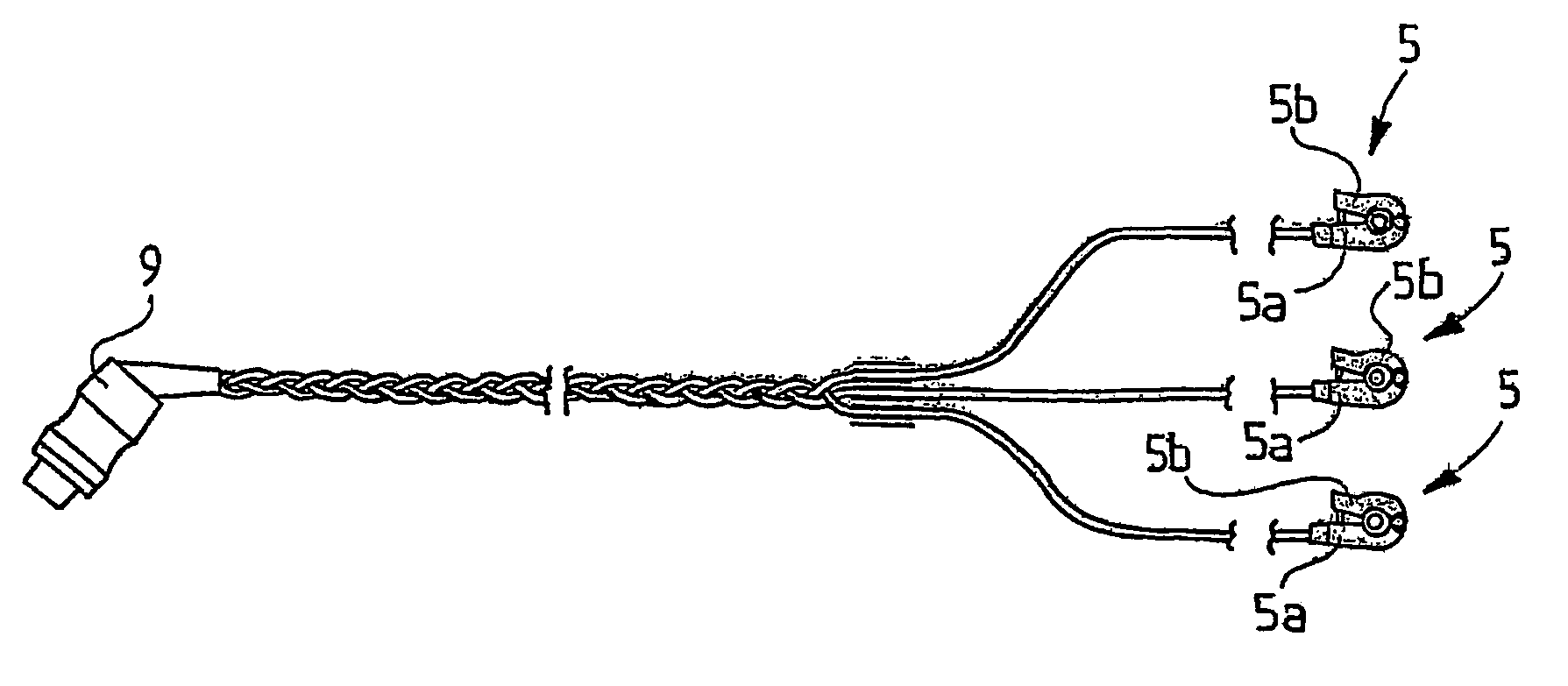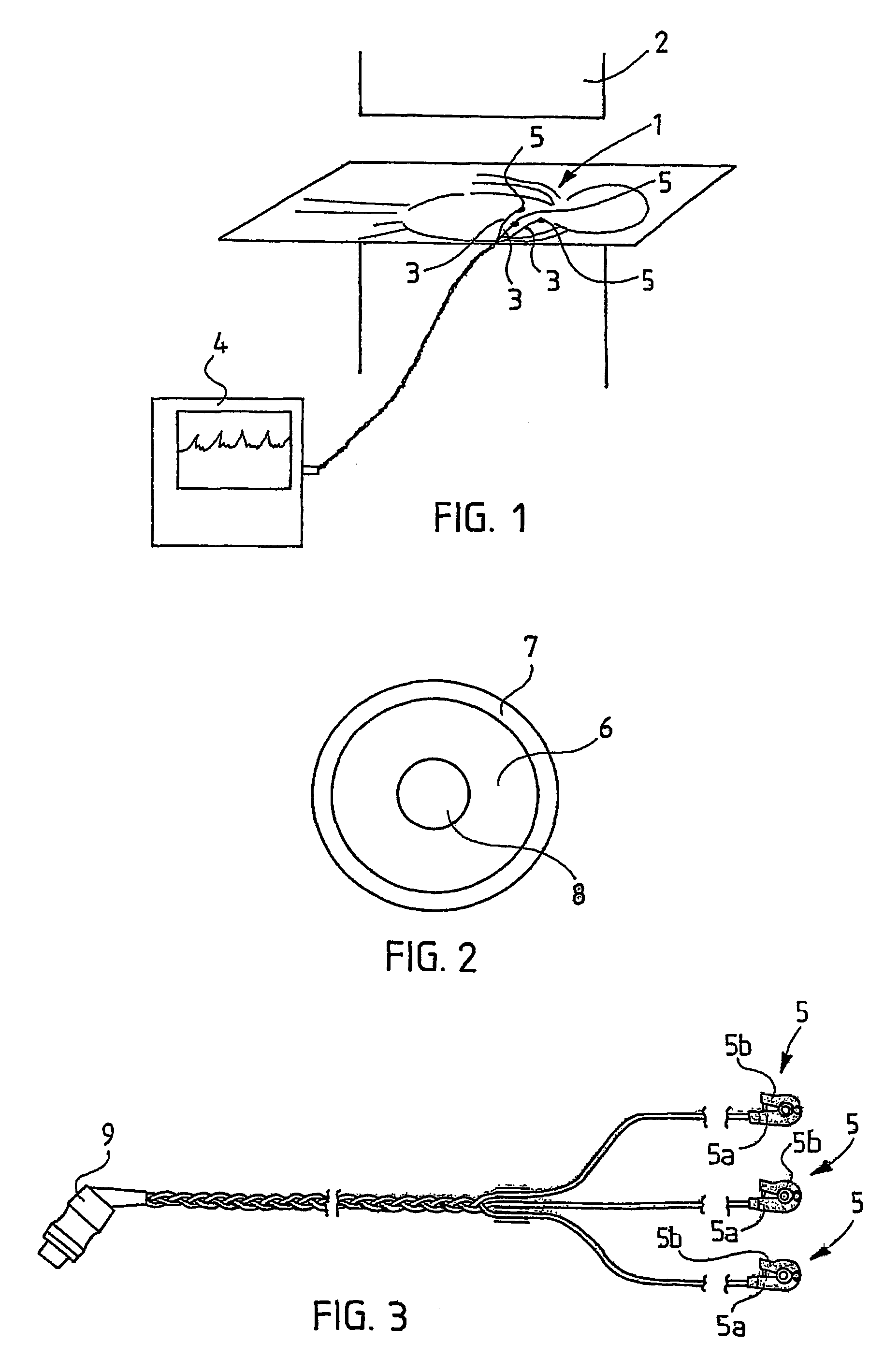Conductor
a conductor and conductive material technology, applied in the field of conductors, can solve the problems of poor usability and ergonomics, severe burns to patients, and poor impedance level of the conductor
- Summary
- Abstract
- Description
- Claims
- Application Information
AI Technical Summary
Benefits of technology
Problems solved by technology
Method used
Image
Examples
Embodiment Construction
[0012]FIG. 1 shows in general a situation in which an EKG curve is measured of a patient 1 during magnetic resonance imaging. Reference numeral 2 in Figure 1 marks the MRI device, reference numerals 3 mark EKG conductors and reference numeral 4 marks a monitor for examining the EKG curve. The EKG conductors are attached to the patient by means of electrode connectors 5 arranged at the ends of the conductors. An EKG conductor set of three conductors forming an entity is formed by the EKG conductors 3, of which there are three in the example of the figure.
[0013]FIG. 2 shows a conductor of the invention. The invention relates especially to a conductor intended for measuring bio-electric signals occurring in an MRI environment, which has an electrically conductive part 6 made of a non-metal material and a sheath part 7 arranged over it. The impedance of the conductive part 6 is in the range of 5 to 300 kilo-ohm. The sheath part 6 is arranged to endure a required voltage, for instance 5 ...
PUM
| Property | Measurement | Unit |
|---|---|---|
| voltage | aaaaa | aaaaa |
| impedance | aaaaa | aaaaa |
| voltage | aaaaa | aaaaa |
Abstract
Description
Claims
Application Information
 Login to View More
Login to View More - R&D
- Intellectual Property
- Life Sciences
- Materials
- Tech Scout
- Unparalleled Data Quality
- Higher Quality Content
- 60% Fewer Hallucinations
Browse by: Latest US Patents, China's latest patents, Technical Efficacy Thesaurus, Application Domain, Technology Topic, Popular Technical Reports.
© 2025 PatSnap. All rights reserved.Legal|Privacy policy|Modern Slavery Act Transparency Statement|Sitemap|About US| Contact US: help@patsnap.com


